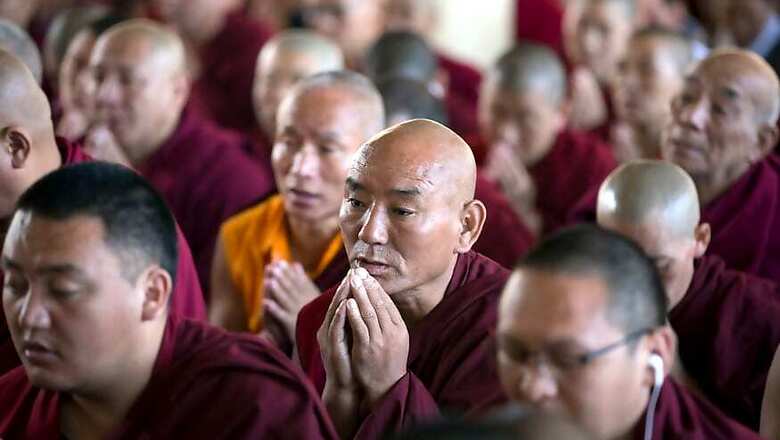
views
A silent movement brewing in Assam is spurring an increasing number of people to adopt Buddhist tenets with manifold objectives. At the vanguard of the movement is the Ahom Royal Society which has already established a monastery and a ‘vihar’ with a preacher at Lakua in Sivasagar located 360 kilometres east of Guwahati.
The development came soon after the Society forged links with the historic Wat Thai Temple in Thailand that had also deputed representatives for establishing the monastery at Lakua. The Budha statue was also gifted by the monastery in Thailand.
“There is a growing trend towards adoption of Buddhist doctrines which had a large following earlier in Assam. The greatest strength of our movement is that it is open to people of all religions and conversion is not a precondition,” said the president of Ahom Royal Society, Kamala Rajkonwer.
The movement has manifold objectives, from putting an end to the ‘deterioration’ in Assam’s social, economic and political conditions to promoting tourism which has been perceived as a viable means of generating employment.
Rajkonwer clarified that the movement is not linked to “Tai Ahom” but only “Ahom”. “When we say Ahom, it means the inclusion of all communities including Brahmins and Satradhikars (Vaishnavite preachers). The movement is based on the principles of ‘samannay’ (syncretism), ‘sampriti’ (harmony) and ‘swabhiman’ (self-respect) with the goals to establish peace and a non-violent society,” he added.
The movement had its origin more than a decade ago but it gathered steam only one and a half years earlier. Since then it has drawn followers from different parts of Assam including Nagaon and Guwahati who have visited the monastery.
Some observers interpret the development as a reaction against the recent excesses by Hindu fanatics in Assam. An ardent follower of the movement in Jorhat cited the recent protest at Guwahati Zoo by BJP activists who wanted a ban on the supply of beef to tigers as an example that has provoked a sharp reaction from different sections. He pointed out that groups of people across Assam have been searching for an “alternative” which would be devoid of fanaticism and radical practices.
“Sporadic efforts to spread Buddhism in Assam had been on for the past many decades but it is only recently that more people have been attracted towards the religion. In a nutshell, it may be said that people are being drawn towards the movement for individual solace and for establishing a distinctive identity,” pointed out Dr Chandan Sarmah who teaches history in Dibrugarh University.
It may be mentioned that two years ago about 50 Hindus from Numaligarh had threatened to convert to Buddhism as a mark of protest against the Citizenship (Amendment) Bill. Large-scale protests had erupted in the state against the new law which seeks to grant citizenship to a section of non-Muslim immigrants from Bangladesh, Pakistan and Afghanistan.
Currently, Buddhists comprise less than one per cent of the state’s population of 3.12 crore recorded in the 2011 census. It is primarily followed by the four Tai communities inhabiting the districts of eastern Assam who mostly migrated from their original homelands in late 18th and early 19th centuries. The Ahoms, who also belong to the Tai, have certain rituals that bear resemblance to Buddhist practices.
The religion had a considerable presence in ancient Assam as may be gleaned from literary and archaeological evidences. Buddhist sculptures and monuments are found scattered in different parts of the state. Remains of temples are also found at Hajo, Tezpur and at Nilachal Hills in Guwahati among other places.
Read all the Latest News, Breaking News and Coronavirus News here

















Comments
0 comment